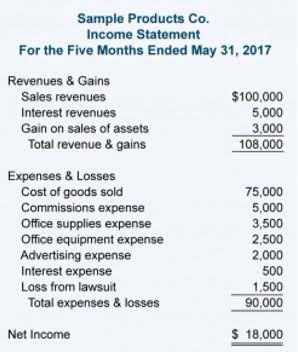
At the core of this suite is the Financial Close Management solution, which simplifies and accelerates financial close activities, ensuring compliance and reducing errors. Once we have obtained the opening trial balance, the next step is to identify errors if any, make adjusting entries, and generate an adjusted trial balance. Adjusting entries are used to modify accounts so that they’re in compliance with the accrual concept of recording income and expenses. From the Deskera “Financial Year Closing” tab, you can easily choose the duration of your accounting closing period and the type of permanent account you’ll be closing your books to. We at Deskera offer the best accounting software for small businesses today. Our program is specifically developed for you to easily set up your closing process and initiate book closing within seconds – no prior technical knowledge necessary.

Let’s Recap Accounting Closing Entries:

The closing entry will credit Supplies Expense, Depreciation Expense–Equipment, Salaries Expense, and Utility Expense, and debit Income Summary. This process ensures that your temporary accounts are properly closed out sequentially, and the relevant balances are transferred to the income summary and ultimately to the retained earnings account. In summary, permanent accounts hold balances that persist from one period to another. In contrast, temporary accounts capture transactions and activities for a specific period and require resetting to zero with closing entries. Since dividend and withdrawal accounts are not income statement accounts, they do not typically use the income summary account.
Permanent Accounts
- Essentially, all opening entries of a new fiscal year are the exact entries and figures of the previous period’s closing entries.
- However, some corporations use a temporary clearing account for dividends declared (let’s use “Dividends”).
- The following example of closing entries will assist you in quickly comprehending closing entries.
- Adjusting entries are used to modify accounts so that they’re in compliance with the accrual concept of recording income and expenses.
- Are the value of your assets and liabilities now zero because of the start of a new year?
- Close the income summary account by debiting income summary and crediting retained earnings.
At the end of each accounting period, financial statements are prepared to determine the financial status of the company. Clear the balance of the revenue account by debiting revenue and crediting income summary. The income summary is a temporary account used to make closing entries. If your business is a corporation, you will not have a drawing account, but if you paid stockholders, you will have a dividends account. If you paid dividends for the month, you will need to close that account as well.
Great! The Financial Professional Will Get Back To You Soon.
This time period, called the accounting period, usually reflects one fiscal year. However, your business is also free to handle closing entries monthly, quarterly, or every six months. Income and expenses are closed to a temporary clearing account, usually Income Summary. Afterwards, withdrawal or dividend accounts are also closed to the capital account. There is no future benefit or utility from income-expenditure accounts.
Retained earnings represent the amount your business owns after paying expenses and dividends for a specific time period. The accounting cycle requires journalizing and posting closing entries. This step is completed after the financial statements have been prepared. The purpose of the income summary is to show the net income (revenue less expenses) of the business in more detail before it becomes part of the retained earnings account balance. After the closing journal entry, the balance on the dividend account is zero, and the retained earnings account has been reduced by 200.
Permanent versus Temporary Accounts

They zero-out the balances of temporary accounts during the current period to come up with fresh slates for the transactions in the next period. If your business is a sole proprietorship or a partnership, your next step will be to close your income summary account. You can do this by debiting the income summary account and crediting your capital account in the amount of $250.
What is the Income Summary Account in Closing Entries?

What are your total expenses for rent, electricity, cable and internet, gas, and food for the current year? You have also not incurred any expenses yet for rent, electricity, cable, internet, gas or food. This means that the current balance of these accounts is zero, because they were closed on December 31, 2018, to complete the annual accounting period. Our discussion here begins with journalizing and posting the closing entries (Figure 5.2).
They are special entries posted at the end of an accounting period. Using the above steps, let’s go through an example of what the closing entry process may look like. Closing entries are crucial closing entries for maintaining accurate financial records. HighRadius has a comprehensive Record to Report suite that revolutionizes your accounting processes, making them more efficient and accurate.
